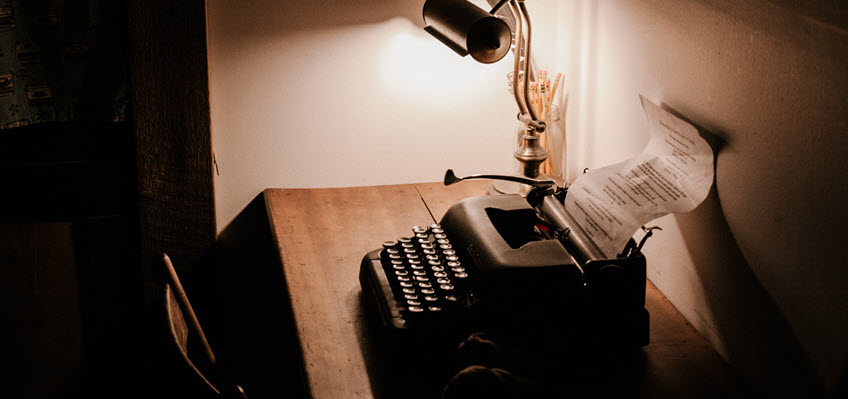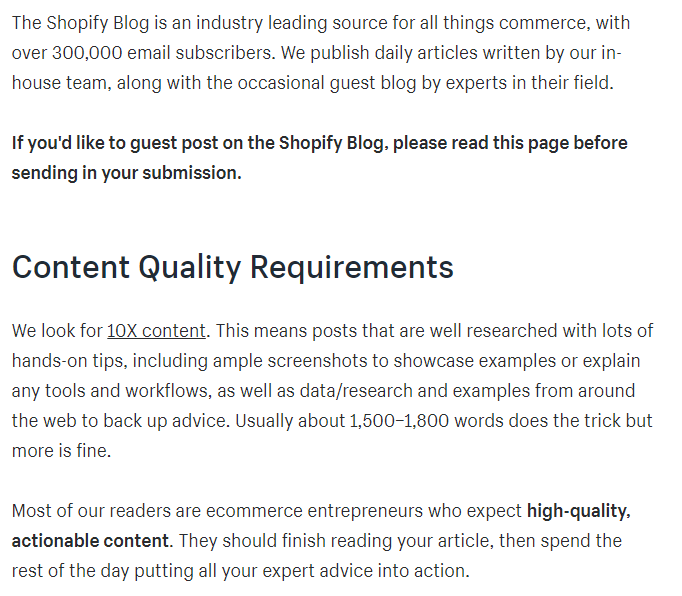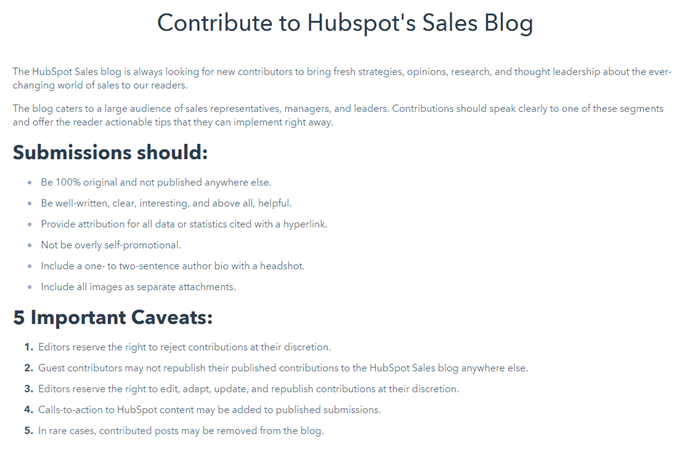
How to Get a Writing Gig at a Popular Publication
Editor’s note: This is a guest post by Andrew Burmistrov of Icons8. Image by Alexa Mazzarello
How do I land a gig at a popular publication? This is the main question that all freelance authors ask themselves… After all, the most important part of being a freelance author is getting freelance writing work.
Follow this how-to guide from the Icons8 team and learn how to get your articles and posts published in credible publications.
Make sure they need authors
This is the first thing you need to check – do they actually need authors?
Look through the footer and menu. There you can find the “Authors” or “Guidelines” section. This section describes who you need to contact to offer your post, which themes are accepted and the guidelines for the text.
If there is no “Authors” or “Guidelines” section – show your perseverance and make direct contact. Send an email to the editor and ask him or her if they are looking for authors and how you can submit an article.
Sometimes there is no contact information for the editor or editorial staff. In this case, to be published you will need to find another way. For example, you could try contacting one of the authors. Ask them to share the editor’s contact information or find out how to contact the editorial staff.
Learn the publication’s guidelines
Before writing or offering your own text, check out the publication guidelines.
There are always two types of guidelines. Formal and informal ones.
Formal guidelines are always reflected in the relevant details document or section. These stipulations concern the number of words in the text, publication themes, format, etc. Here are a couple examples of those:


And Hubspot’s Sales Blog guidelines:


Always follow these guidelines. If your material does not correspond to the subject matter of the publication, it will not be accepted.
But there are also always some informal guidelines. Unspoken rules. It is important to understand that at the head of each publication there is always one editor. Most often with some kind of vision and their own preferences.
Some editors prefer when authors illustrate the text by themselves. Some on the other hand, do not., Especially if all the publications are supposed to be consistent in a single visual style.
Some editors give preference to certain styles of publication text. Some of them want more informative text, others – more playful. Some of the editors like short sentences, others – long, Tolstoy-style sentences.
It’s the same situation with grammar. Some publications have a person who reads the text before and corrects mistakes. But you should always act as if there is no such person. If you are not sure of your grammar use spell checkers like Grammarly or Ginger.
For some editors, the deadline for submitting the text is extremely important and if you miss it, the text will be rejected. Others turn a blind eye on deadlines.
So, it’s always a good idea to know the informal or unspoken guidelines. Always try to get this information from the editor in the hiring processor when you speak to them beforehand..
In our experience with authors we can say with confidence that those who do not ask questions normally write texts that need the most revisions.. Try to avoid this! More revisions mean more time, more effort and less patience on the part of the editor.
Contacting the editor
There are two ways to do it. Through the form on the website if they have one. Or, if not, bywriting them a direct e-mail.
The first one is simple. But if you face a situation where there is no special form and you are forced to write an email, it’s best to keep it short.
Never write long letters. Editors are busy people and they will never have the time or motivation to read a thousand word email from someone looking for work. It’s a better idea to split it into two short ones.
The task of the first letter is to hook. Write briefly about yourself and add a link to your portfolio if you have one. If you do not know if they are looking for an author, then ask. Thus, this letter should contain a little information about you, your skills and your experience.
After contact is established, proceed with the second letter. The content of this letter depends on the results of the first one. If the editor is ready to work with you as an author, then offer them a topic. Always suggest a few topics. This creates room for choice and shows your strengths and experience as an author.
In addition to this, try to get live communication with the them – on social media or on Skype. In the process of live communication, you will find out more details about the editor, their preferences, and what they need or want. This will simplify the work on your end when you sit down to write.
If your candidacy is rejected, then try to find out why. Sometimes the editors explain to the authors what exactly they are not comfortable with. Some of these explanations can be used to avoid failure in the future.
Remember that you can expect a delayed response from the editor. Sometimes it makes sense to write a short follow-up after a while and ask them what stage of consideration your letter is at.
For example, at Icons8 Blog we appreciate authors who write clear letters and who reach out to us to make direct contact.. This shows the author’s interest in the work and their willingness to take the initiative.
Quality in the first place
Before you send the text to the editor, read it over several times. Look at it from the position of the reader: “If I came across this article, would I read it?”.
Is it easy to read the text? How well is the material presented? How well is the material absorbed? Do questions arise after reading or the topic is fully explained?
Some of these questions will be answered by applications that determine the readability of the text. For example – Hemingway Editor. Other can be answered by placing yourself in the shoes of the readers.
Always answer these questions before sending your article to the editor.
Always read existing texts of the publication. Your material should be on a similar level or higher. Pay attention to how existing texts were written, how it is divided and what is given preference or priority.
After this read your text again. Does it fulfill all requirements? If yes, then send it to the editor.
It’s all about the deal
Remember that publishing your post in the publication is only one part of your deal with the editor. Nowadays there are many people who want to write. But that’s not enough. You must be useful. How? There are plenty of ways.
Be an expert in what you are writing about. It’s easier to teach a developer to write than to make a developer from a writer. In this case, the first acts as an expert, and the second is an author who does not so well disentangle the topic and may miss something important.
Share your post. It is not enough to publish it – it must be read. Therefore, it will always be a plus if you share your material on social media. Twitter, Facebook or thematic social networks will create traffic. It can be a huge plus in the editor’s eyes.
Get experts on board. For example, if you are poorly versed in design, but you have other designers who can give quotes for the publication, this will make the article more interesting and readable – people like to learn from experts.
Share the post between publications. It’s always a good idea to exchange posts or write a guest post.
Here is an example of how Icons8 hires authors:
We always appreciate experienced authors with a background in design. But there aren’t always very many of those. So often we give preference to those who have an interesting approach to their texts.
For example, we like it if the author can suggest a theme which will be about design, but approach it from an indirect or unique angle… Also, we appreciate people who can write playful texts that will be useful and light at the same time. The author always needs to bring something new. If you teach us something new, you’ll teach our readers something new, and that will improve our publication’s quality.
Never give up
Nothing comes easy in this life. Be ready that your texts will be rejected. But do not give up and continue to look for publications where you can submit your text .
Remember, publishing the first text is the hardest. After that the process will be easier – the editors willingly work with the authors they know, especially if the level of their material is high enough.






